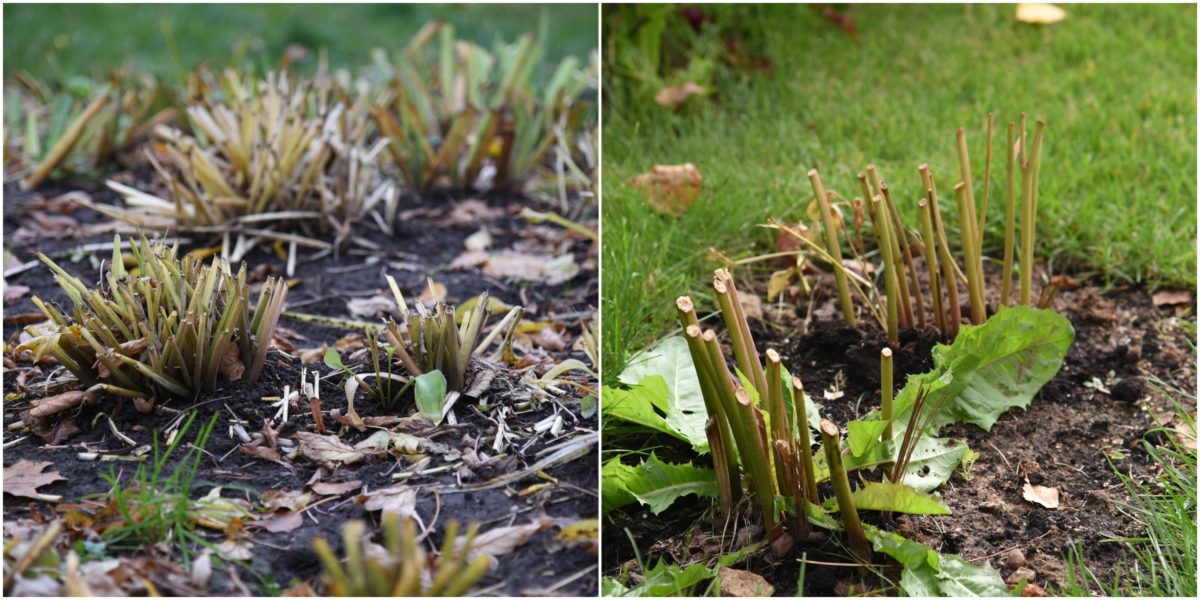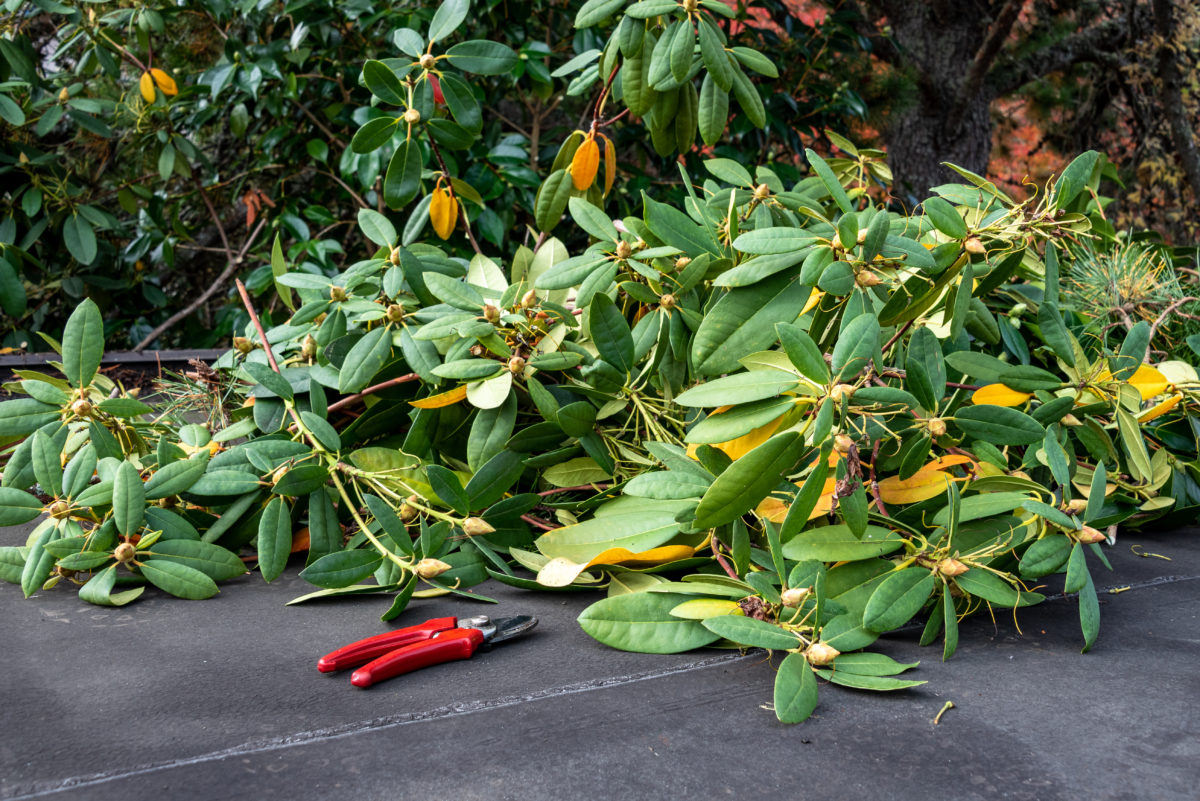
An unexpectedly popular plant care series that we ran on Blooming Backyard was the one covering reasons why beloved plants don’t bloom.
I say “unexpectedly” not because our readers were disappointed that flowers weren’t opening on their rhododendrons or gardenias (that feeling is only natural), but because one of the main causes of the bloom failure was quite a common mistake: pruning these plants in the fall.
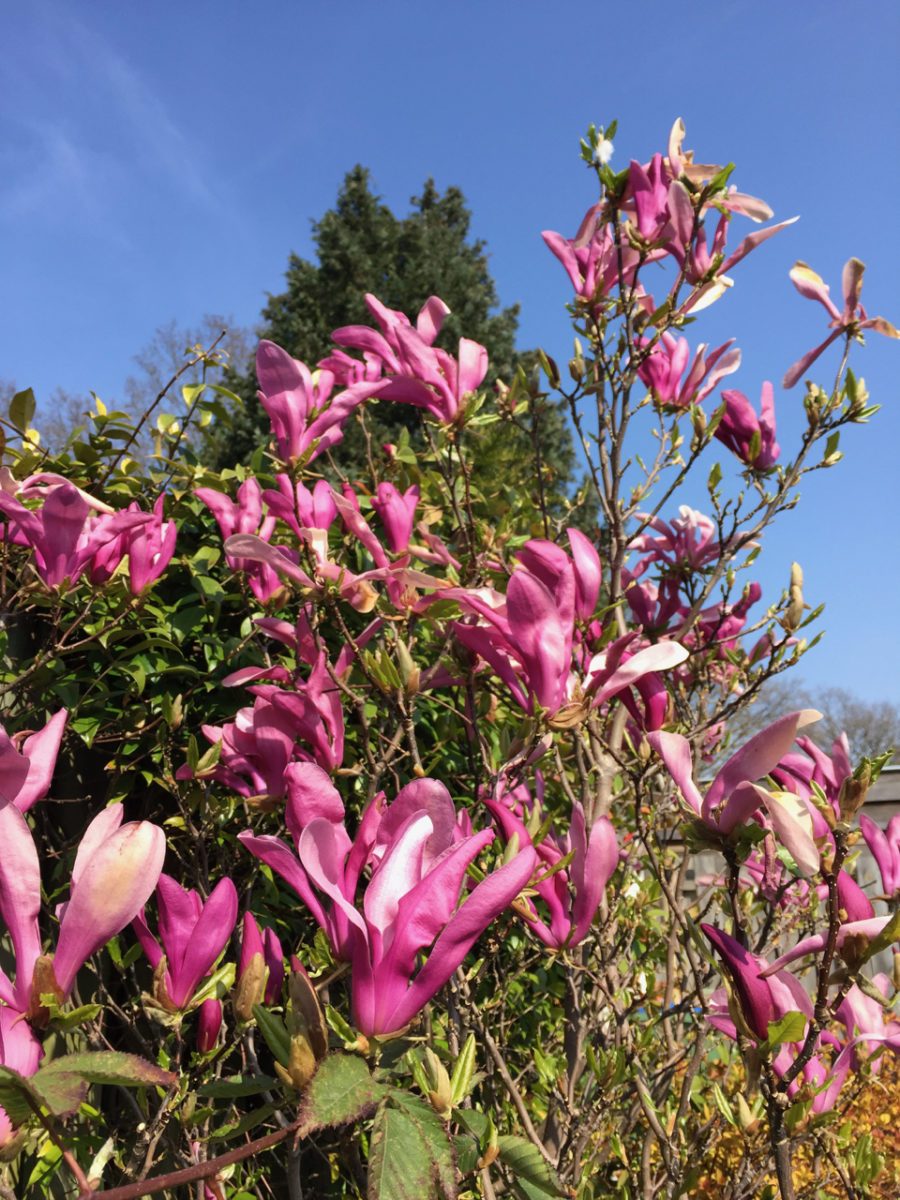
It’s quite easy for me to say “in the fall, you shouldn’t prune plants that bloom on old stock.” But what does that even mean and what plants does this advice apply to?
I’ve already covered the main reasons why you should postpone most of your pruning until spring rolls around in this article. But sometimes the temptation to clean up the garden is a bit too strong to resist in the fall.
So if you really can’t put your pruners away for a few months, then have a look at this “absolutely do not prune” in the fall plant list. Spare them, and you’ll spare yourself the disappointment next year.
1. Rhododendrons and azaleas
I will start with rhododendrons because they’re one of the slowest plants to bounce back after an ill-timed fall pruning session. And I’m bundling azaleas in because they’re both part of the Rhododendron genus, so their pruning needs are the same.
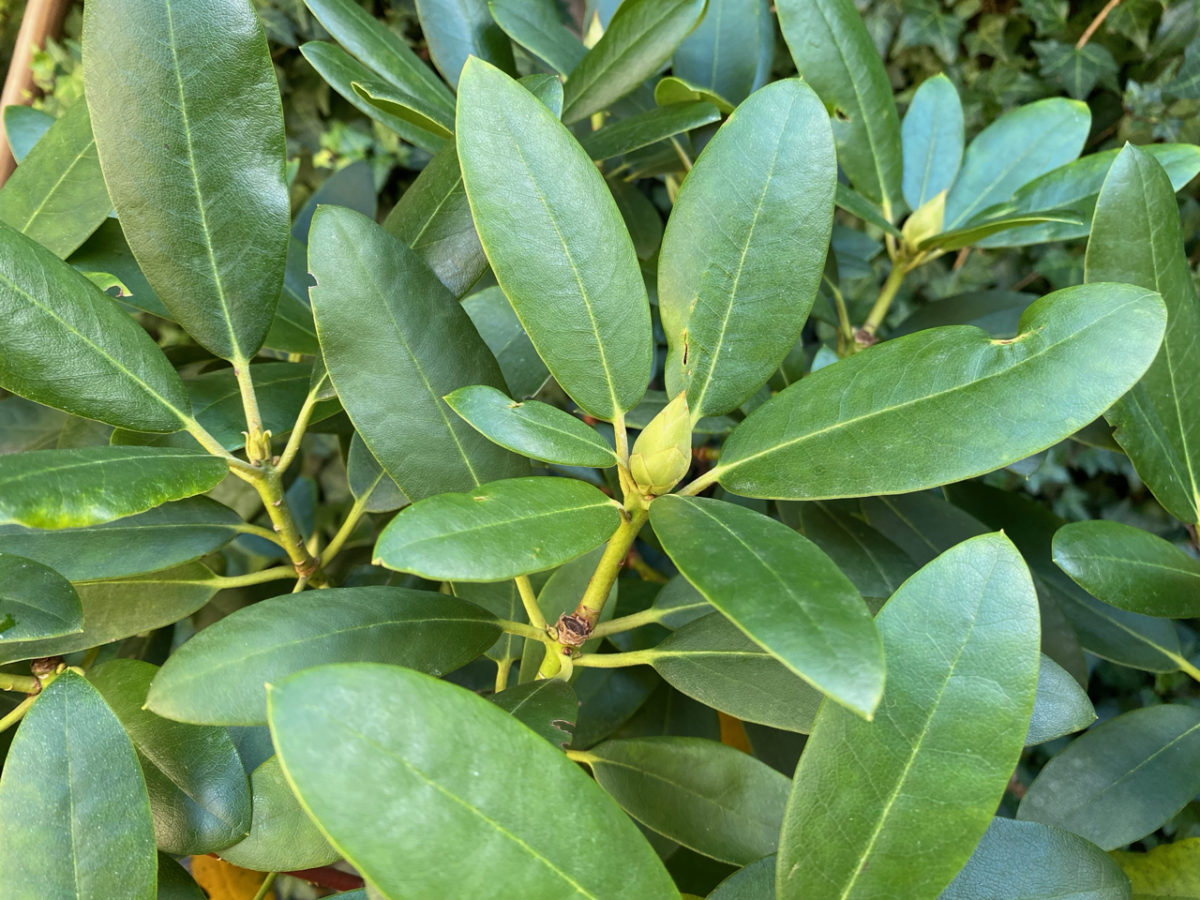
Rhododendrons bloom on old wood – this means that your plant will set next year’s flowers almost as soon as this year’s flowers have fallen.
Depending on the variety you’re growing and their location, your rhodys may even start their bud swelling process before they lose their current blooms. So if you decide to prune them in the fall, you will have to cut off these buds, thus tampering with next spring’s display.
The best time to prune your rhododendron is after the blooms have fallen, but right before new buds have set.
One popular adage, at least in the United States, was to not prune later than the Fourth of July. Granted that’s an easy date to remember, but with the type of erratic climate patterns we’re experiencing now, I think that it no longer holds true.
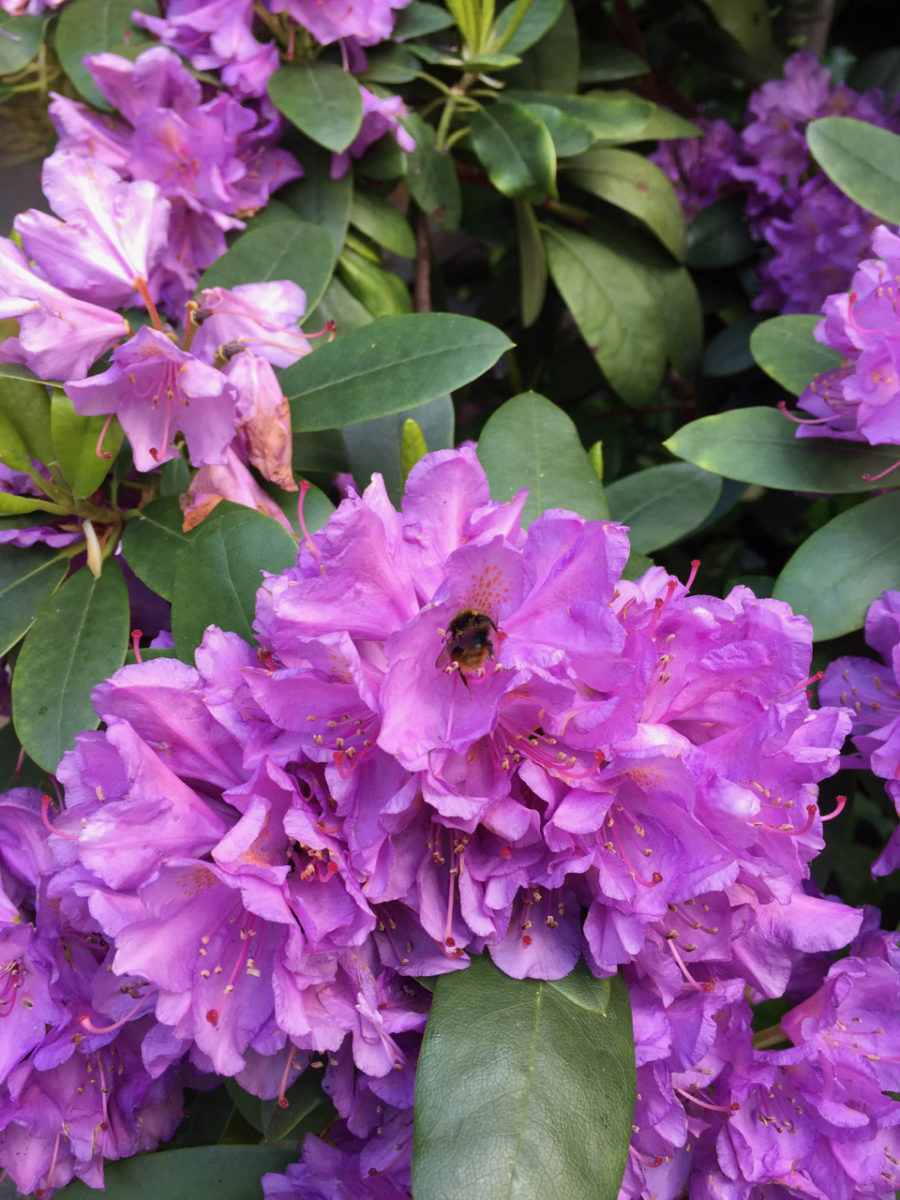
As a general rule, aim to prune your rhododendrons and azaleas no later than three weeks after their blooms are almost gone in late spring.
Keep in mind that rhododendrons are slow-growing shrubs, so they don’t need to be pruned every year. Only prune them if they’re overgrown or if you want to give them a more cohesive shape. Never prune more than a third of the plant at any given time.
Related reading: 8 Reasons Why Your Rhododendrons Aren’t Blooming
2. Japanese camellias (Camellia japonica)
I don’t know what it is about camellias that makes some gardeners want to give them endless haircuts. Camellias are delicate plants, but perhaps because they are evergreen, they get this reputation of being the tough shrub on the block.
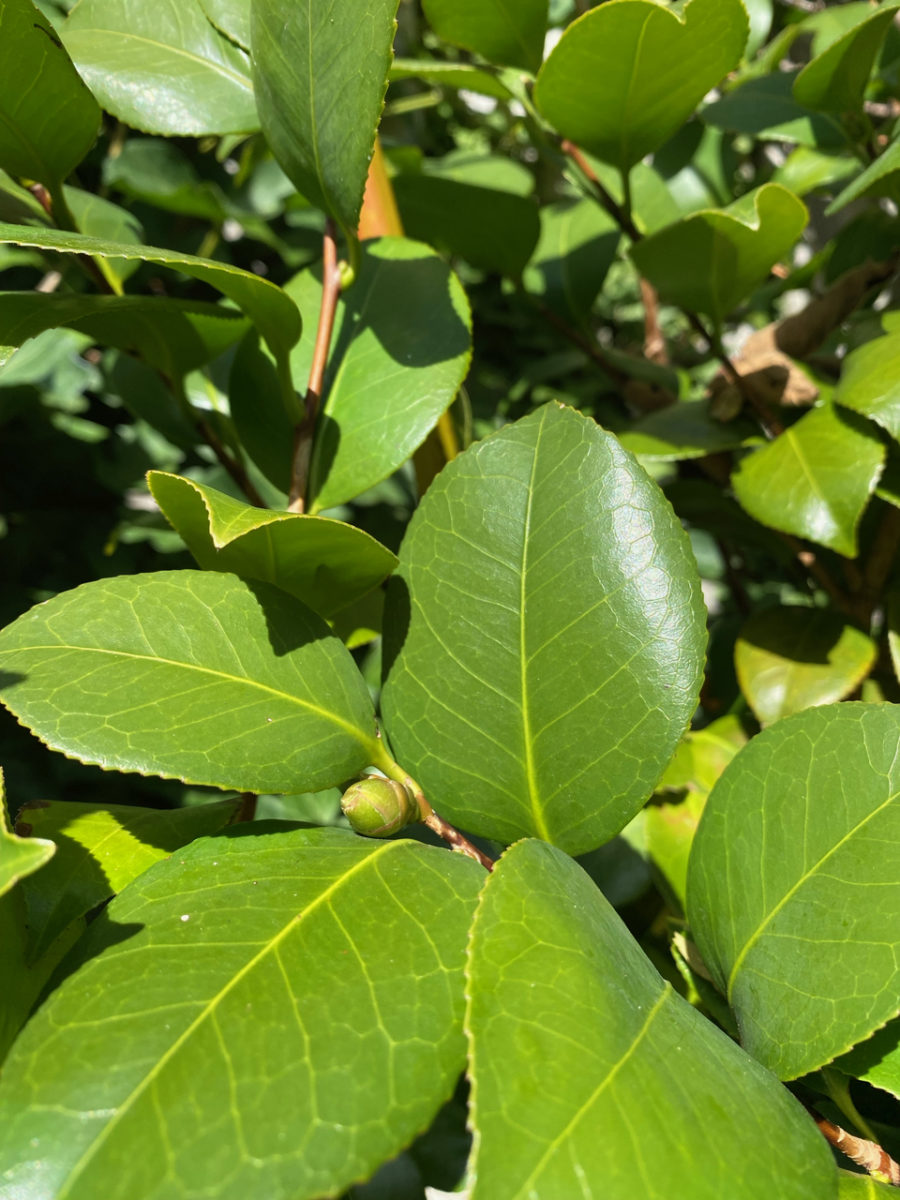
Just like rhododendrons, camellias also bloom on old stock, but they do so even earlier in the year. Depending on what cultivar you’re growing (and there are thousands of cultivars on the market), the buds of Camellia japonica can set as early as March and burst open as early as November. That’s clearly not going to happen if you prune it in the fall.
The best time to prune your camellia is in early spring, right after the blooms are gone. However, if your plant is an early bloomer, it’s better to wait until the last expected frost date has passed before you trim it.
Camellias only need a light pruning to encourage branching (if you’re going for the mounding shrub look) or vertical growth (if you prefer the tree-like look). You definitely don’t need to prune your camellia every year.
Related reading: 8 Secrets to Get Your Camellia to Bloom Like Crazy
3. Lily magnolia (Magnolia liliiflora)
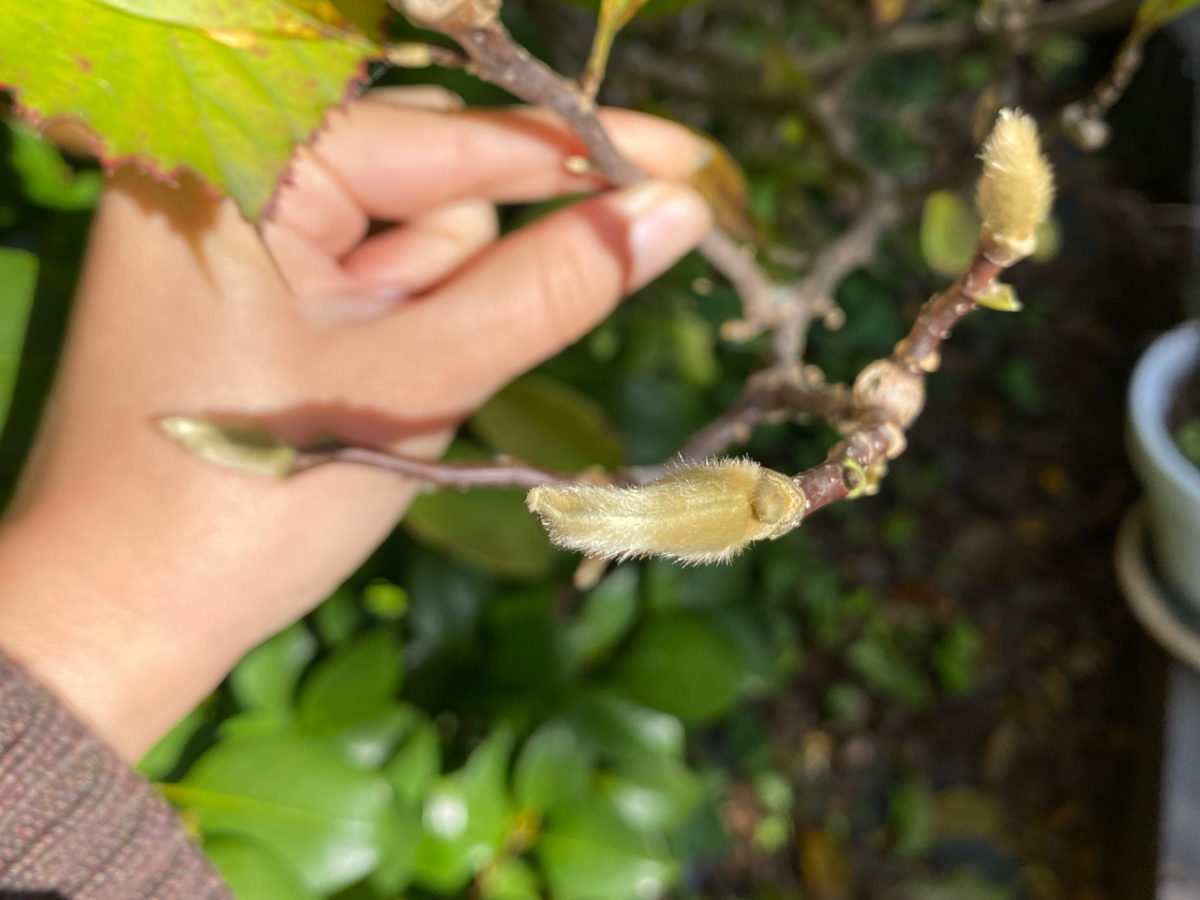
In the United States, one of the most common types of magnolia shrubs is either a Magnolia liliiflora or a cross of Magnolia liliiflora x Magnolia stellata. Because they often grow as shrubs (rather than trees) and because they’re deciduous (they lose their leaves in the fall) this type of magnolia unfortunately usually gets the shrub fall pruning treatment.
After trimming down their magnolias during fall, some gardeners are left scratching their heads as to why the magnolia didn’t bloom in late winter or early spring. The answer is in the timing.
Like the hardworking plants that they are, magnolias will set next year’s bloom right after this year’s bloom has faded. So we have to walk a fine line with pruning to get the window of opportunity just right. Luckily, it’s easy to see the buds as soon as they form. They look like soft and velvety candle flames at the end of the bare stems.
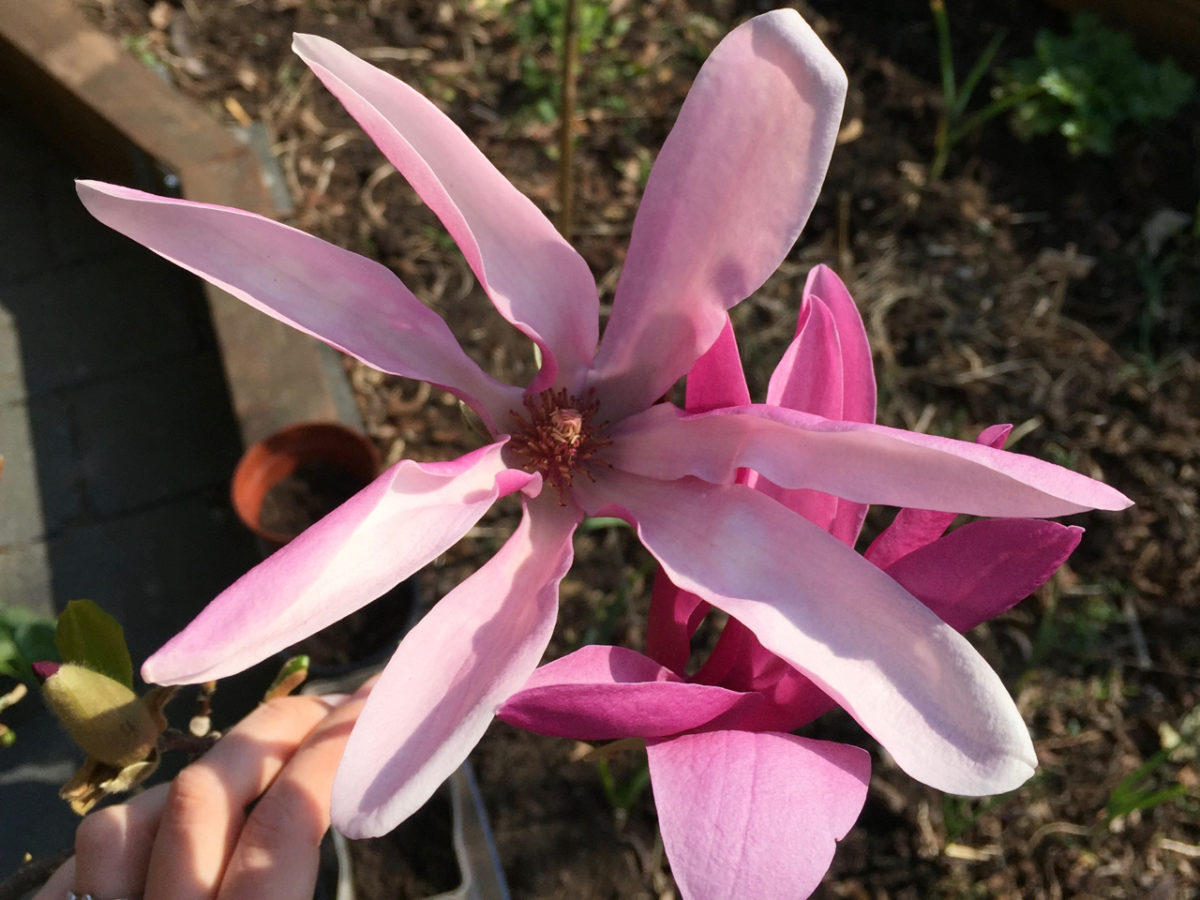
If you want to shape your lily magnolia into a tree-like structure, cut one stronger lower branch every year. Don’t overtrim your magnolia, certainly not before it has established a strong root structure.
4. Climbing hydrangea
Giving hydrangea pruning advice is tricky because there are so many varieties out there with different needs. And when people hear hydrangea, they jump on the trim wagon without first checking which type of hydrangea they’re growing.
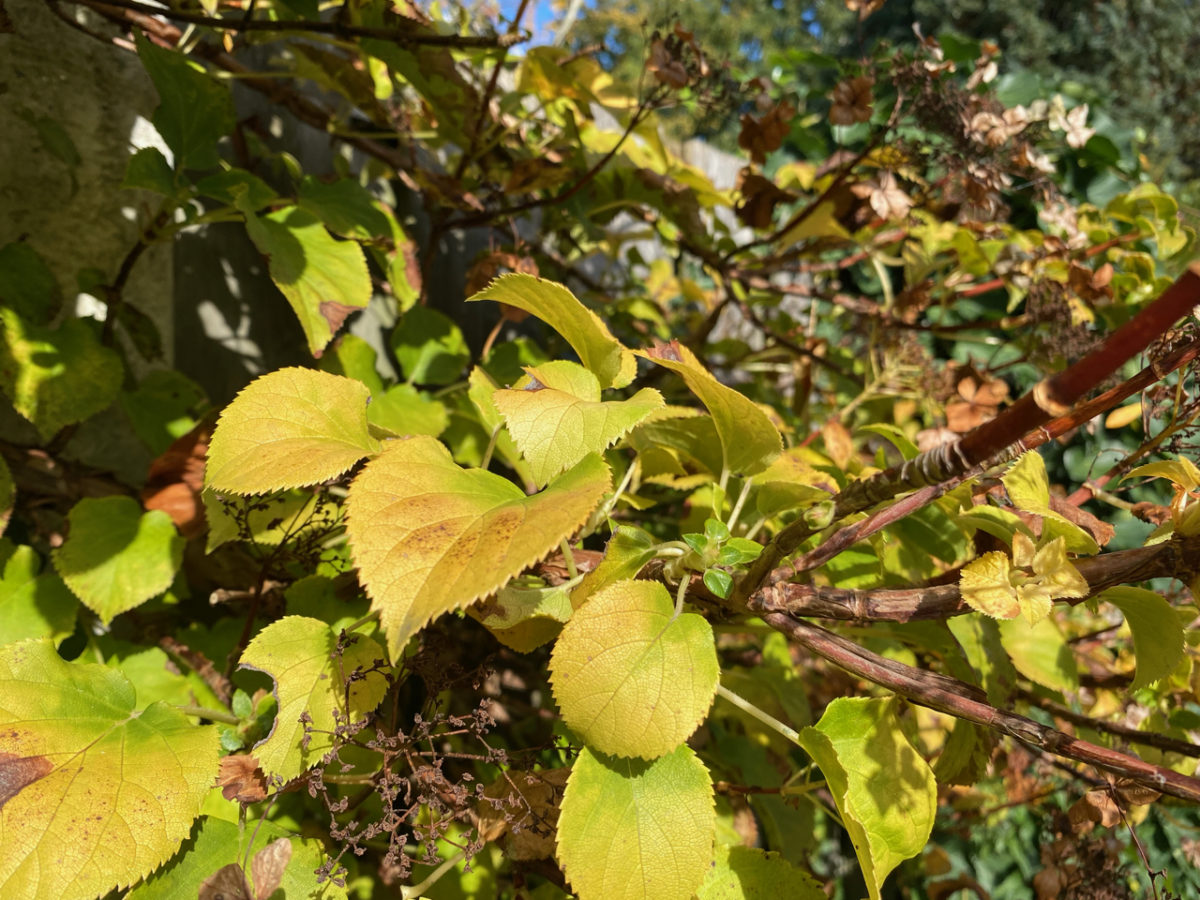
So please keep in mind that this advice applies to climbing hydrangea (Hydrangea anomala), mountain hydrangea (Hydrangea serrata) and oakleaf hydrangea (Hydrangea quercifolia). All of these grow on old wood. But unlike all the plants we’ve been talking about so far, it’s not so easy to tell where the new bloom will come out. The buds are very small in the fall, and by pruning back your hydrangea, you risk removing a lot of next summer’s bloom.
In general, these types of hydrangeas should be left alone until they leaf out in the spring. Only then will you be able to tell which stems have dried or died and are ready to be removed.
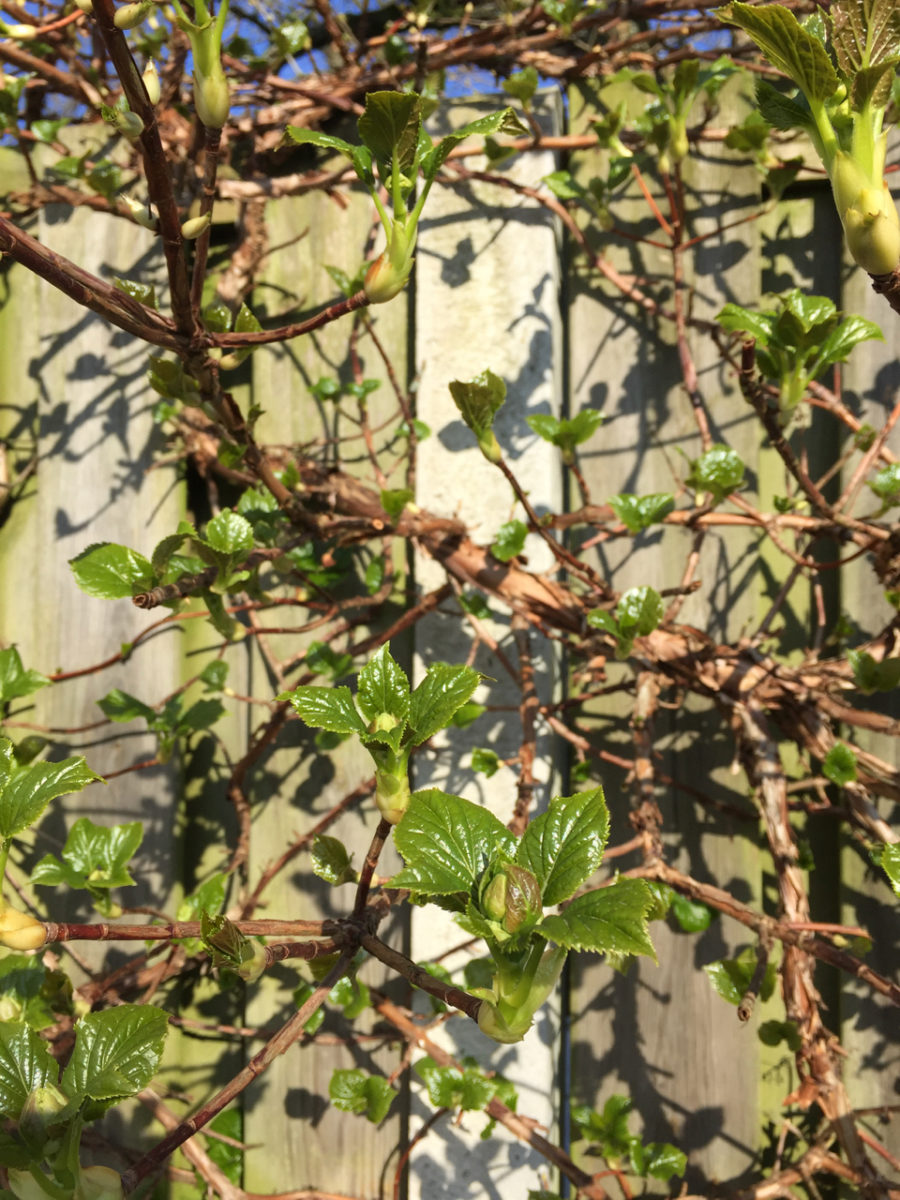
Having myself made the mistake of pruning too early (albeit in early spring, not in the fall), I can tell you it’s a bit heartbreaking to cut into a branch that looks dry only to find there’s a lot of sap and life in it. Bide your time when it comes to pruning these hydrangeas, and they’ll reward you with a full bloom for up to two months.
5. Lilac (Syringa vulgaris)
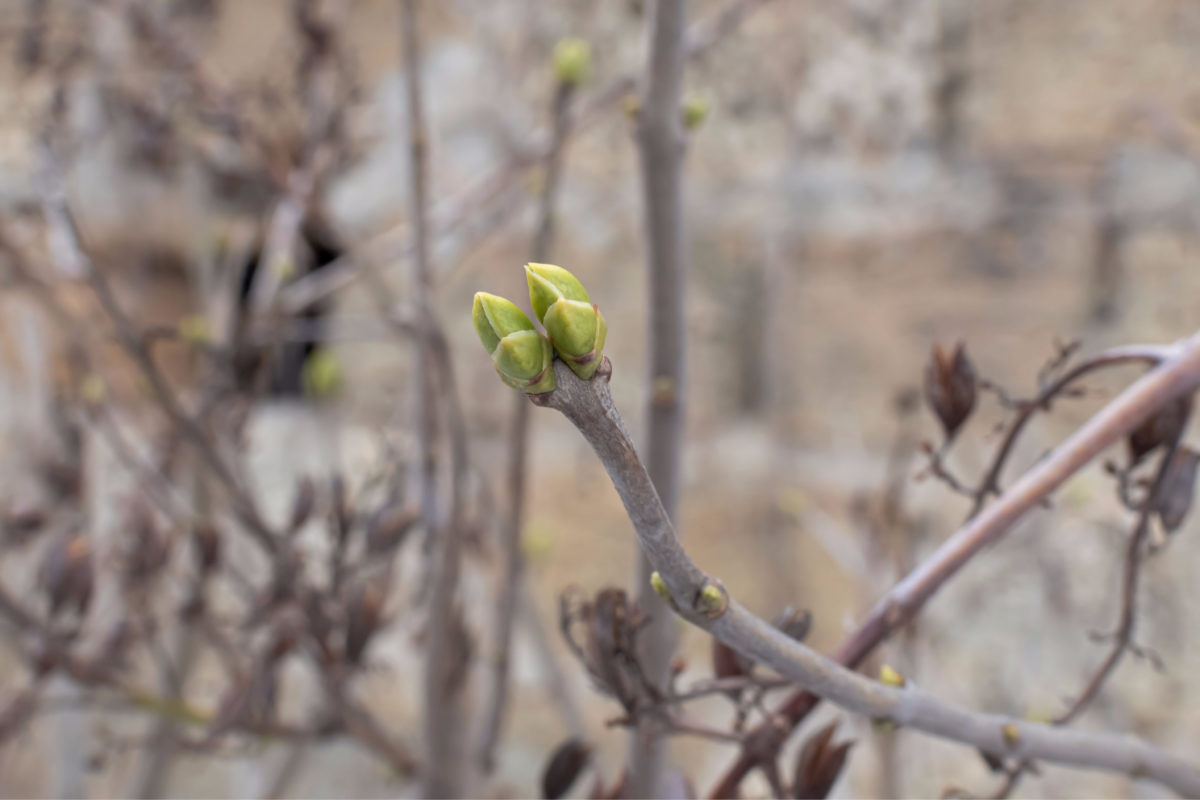
So far, I’ve been talking about not pruning in the fall and keeping pruning light when it is time for it in spring. However, pruning is crucial to keeping lilacs healthy and manageable. Lilac shrubs bloom on old wood, so plan to stick to a late-spring pruning schedule, right after the plant is done flowering.
Since lilacs are moderately fast growers, and they sometimes have intertwining branches, removing the excess promotes good air circulation and keeps the growth controlled. If you’re aiming to train your shrub into a tree, you can gradually remove older lower branches. You can also cut down spindly branches to a strong shoot and remove old suckers along the stem and the main branches.
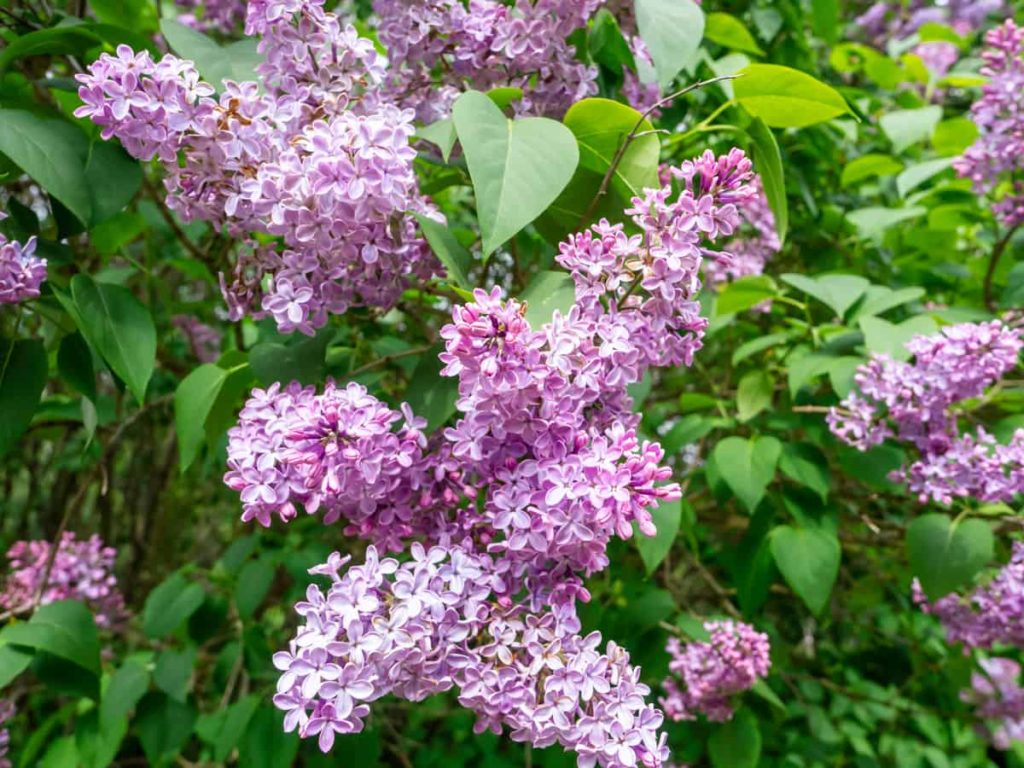
Even though lilacs are hardy, the recommendation not to cut down more than a quarter of the shrub at a time still stands. Your plant won’t die, but it may take a couple of years to bounce back to full bloom if you overdo the trimming.
Related reading: How and When to Prune Lilacs for Brilliant Blooms Every Year
6. Forsythia
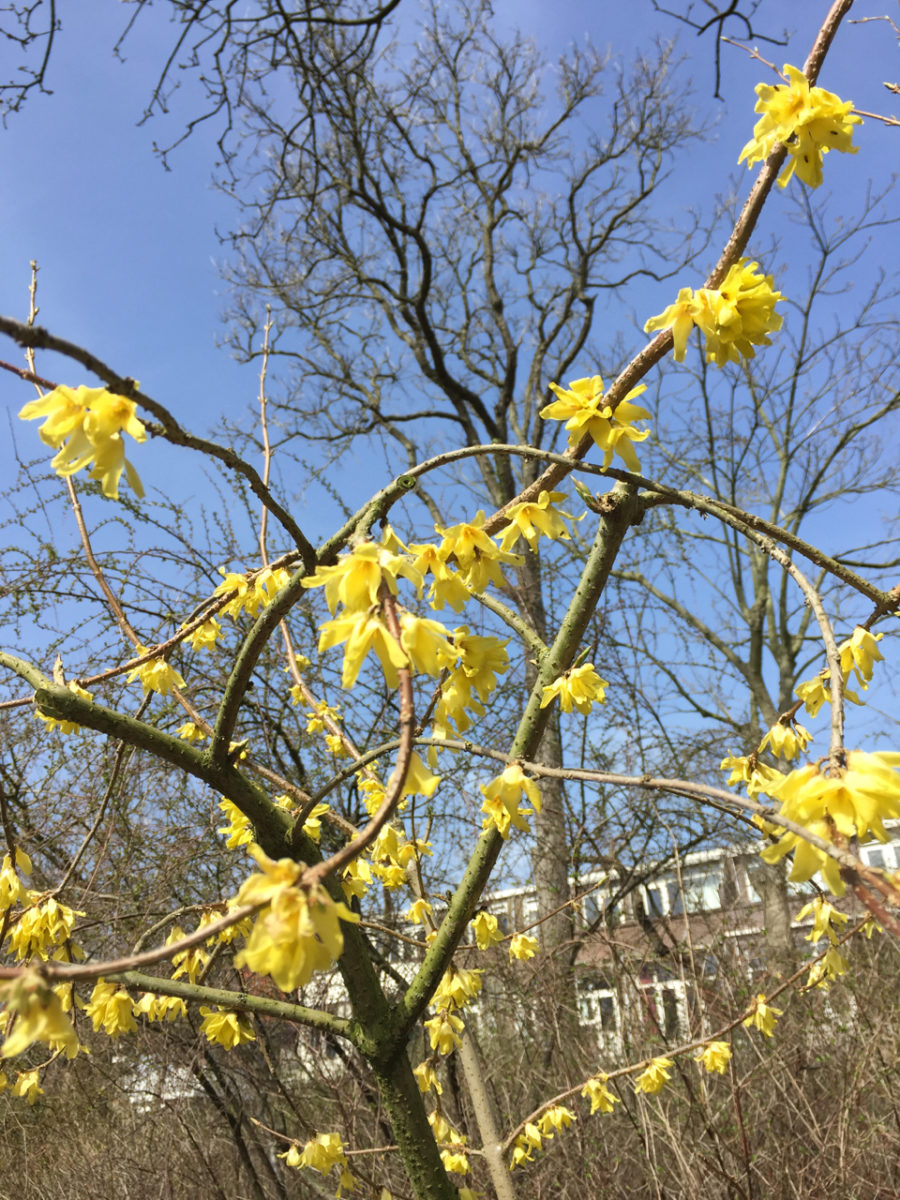
What an absolute joy a blooming forsythia is after a long drab winter! Remember that sight next time you plan to prune it in the fall. The main reason why forsythia is able to bloom so much earlier than other shrubs is because it has been nurturing those buds on old wood for almost a year.
Forsythia is a fast grower and can get pretty unruly if left to its own devices, so by all means don’t skip the pruning part. However, you should only cut back forsythia immediately after its blooms are gone. If you procrastinate for too long in spring, you’ll be removing the buds that would have brought a splash of color next year. Just like with all the other plants on this list, it pays to pay attention to the plant in order to get the timing right.
7. Snowballs (Viburnum)
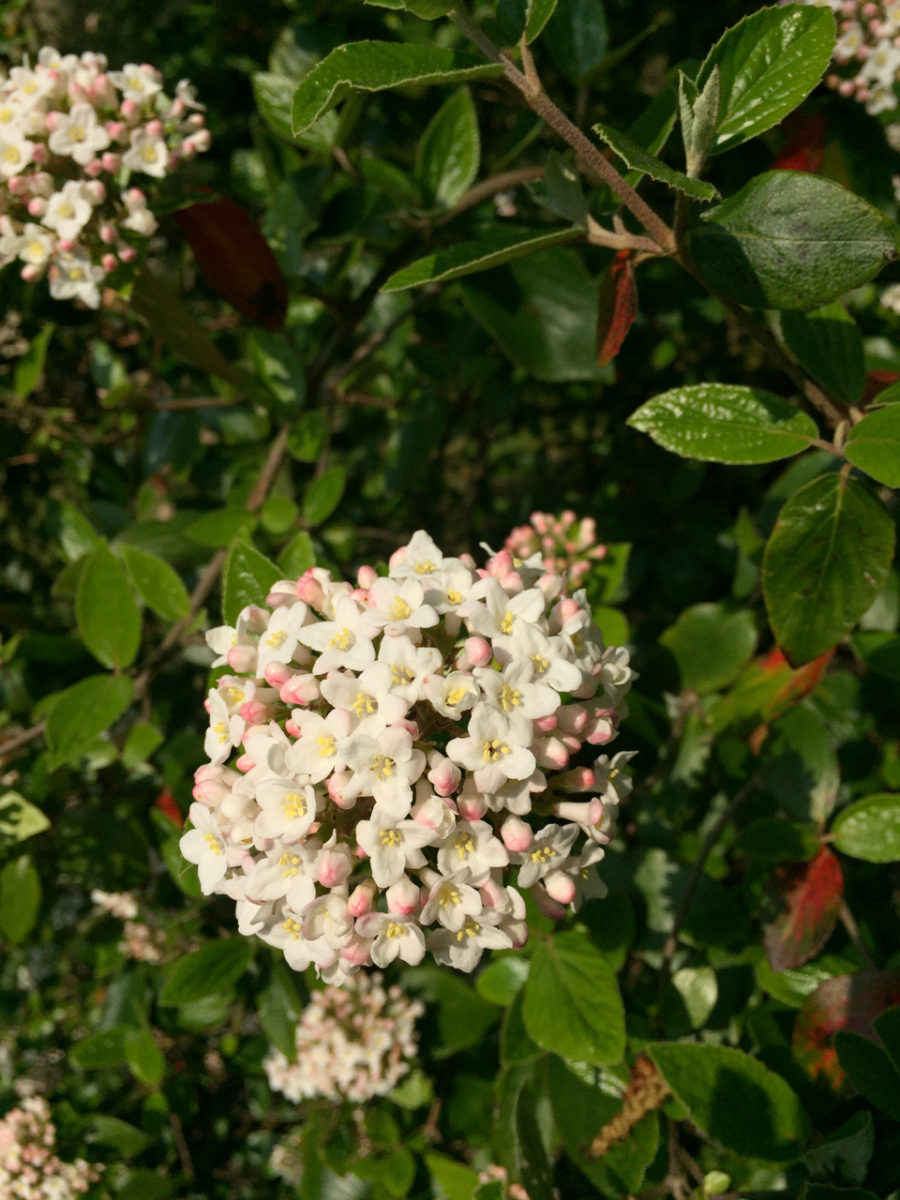
Viburnum is such a diverse group of shrubs and it goes by many many names. Some gardeners grow them for their immense bouquets of flowers, while others find the colorful berries are the main attraction. The moniker of “snowballs” applies most commonly to Viburnum macrocephalum, a very popular variety which itself has a lot of cultivars in many shapes and sizes, but usually white or vanilla in color.
Viburnum bloom on last year’s growth, so you should never prune them back in the fall. Wait until mid-spring or early summer to give them a trim. You have about a month once the flowers have faded to take action; so in this case, the advice to prune before the Fourth of July does make sense. Then cut back some of the intersecting branches to open up the shrub for better airflow.
8. Ornamental sedges (Carex)
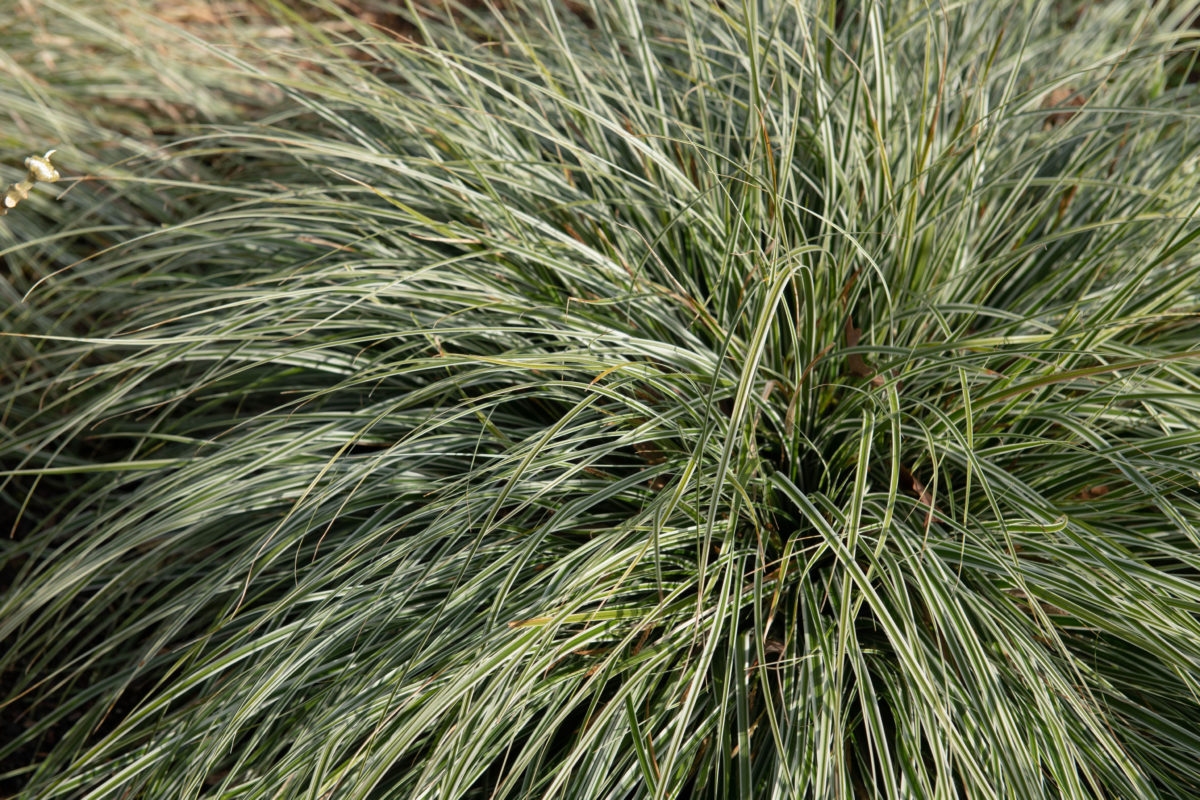
All of the other plants on this “do not prune in the fall” list gained their spot by blooming on old wood (last year’s growth). Obviously, that’s not the case with ornamental grasses. All two thousand species of carex are perennial, so they do need a trim to remove old plant material and reinvigorate their growth.
The reason why you shouldn’t prune them in the fall has to do with the structure of the plant. Once you open up the sheaths for the winter, moisture will get down to the root system and start rotting from the ground up. That’s not such a big problem in the spring, when new growth starts right away after pruning and you get more sun that dries out the moisture.
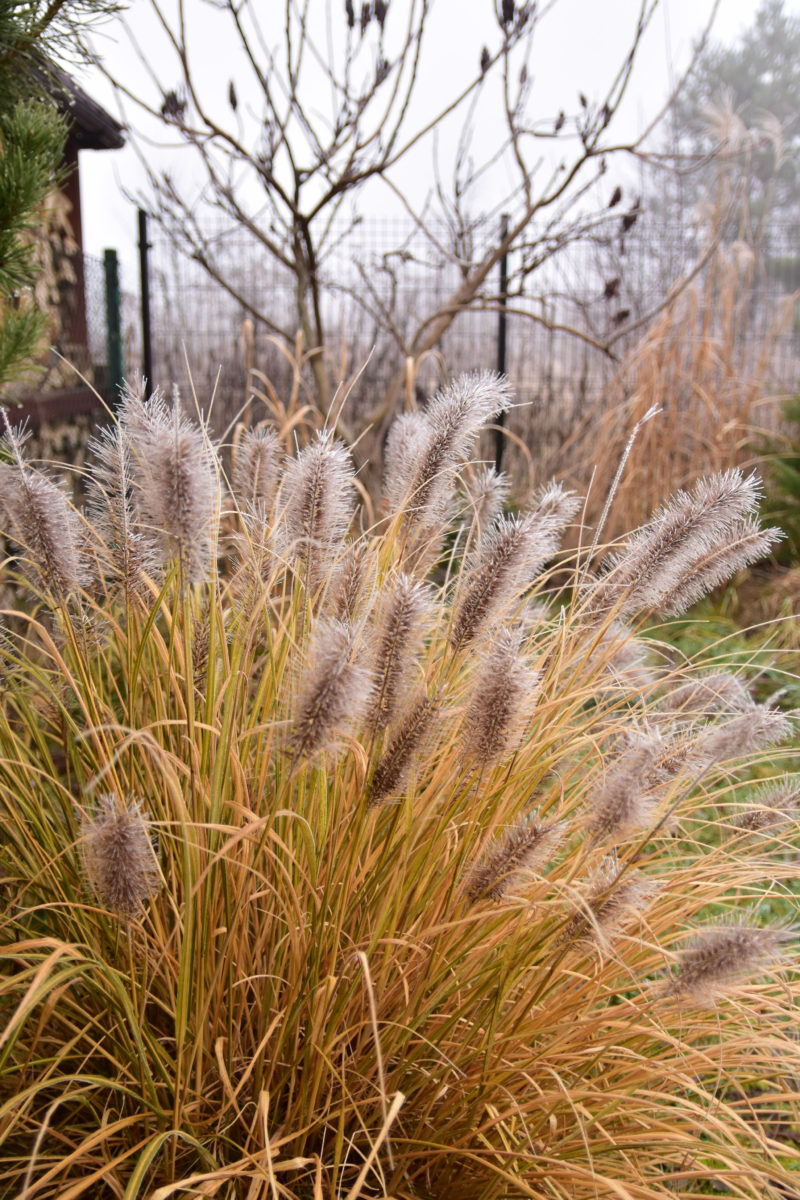
But even in spring, if you cut these grasses down too low, moisture will collect around the crown and cause rot. Stick to only removing the dead matter in spring.
The easiest way to do this is by running your hand through the sedges (wearing gardening gloves, of course) and tugging at the blades, but not too forcefully. This should dislodge the dead plant material.
So if you’re overwhelmed with pruning jobs in the fall, now’s the time to take a breather and ask yourself “Do I really have to?” Most of the time the answer is “nope.”
There are some perennials that do need a serious haircut in the fall – find out what they are in our article below:


